Hello there my fellow gardeners, coming to you again from the campus of Botanic to discuss tips and anecdotes for successful gardening.
This week concludes our 3-part series of frequently asked questions. But let’s not go there so fast my fellow gardeners! First off, how about the warm beautiful weather we’ve all enjoyed for much of the last 3 weeks? Frankly, I truly cannot remember such a long warm weather stretch this time of year. What a gift it’s been for those of us craving sunshine, dirt between our fingers, and the anticipation of Spring. This week and next, the prognosticators are predicting temperatures back into the upper 30’s. Of course, the seasoned gardeners among us all would expect and of course know we aren’t in the clear here in Central Alabama till after Easter. Typically, our frost-free date is April 5th, and some of you may even remember the year it snowed in April. So, while you might find and purchase hard to find plants showing up in nurseries now, wait on planting, unless of course the plant is dormant or hardened off. Now, let’s start addressing the last 2 of my most frequently asked questions.
#1
“How do you recommend I plant this plant?”

Folks, proper planting of plants is paramount for successful gardening. To not put forth the effort to follow a simple stepwise approach planting process will result in mediocre results at best, and very often plant death. Trees, shrubs, and many perennials, should all follow a very simple approach. It boils down to the following:
1. Dig a hole at a minimum 1.5 times wider than the width of the root ball and place soil out to the side.
2. Make the depth of the hole 1.5 times deeper than the height of the plant’s root ball. Once the hole is dug, we need to check drainage. Fill the hole with water and measure how long it takes for the water to disappear. If it takes more than an hour, you have a drainage problem. Plant roots must respire—the roots, as you see, absorb oxygen. If the roots are submerged in water the roots cannot breathe and eventually die. As the roots die, they won’t translocate water to the rest of the plant. The result: the plant eventually dies. In fact, the result is the same as if the plant existed in a drought-stricken situation. The solution to a poorly drained soil is our step 3…
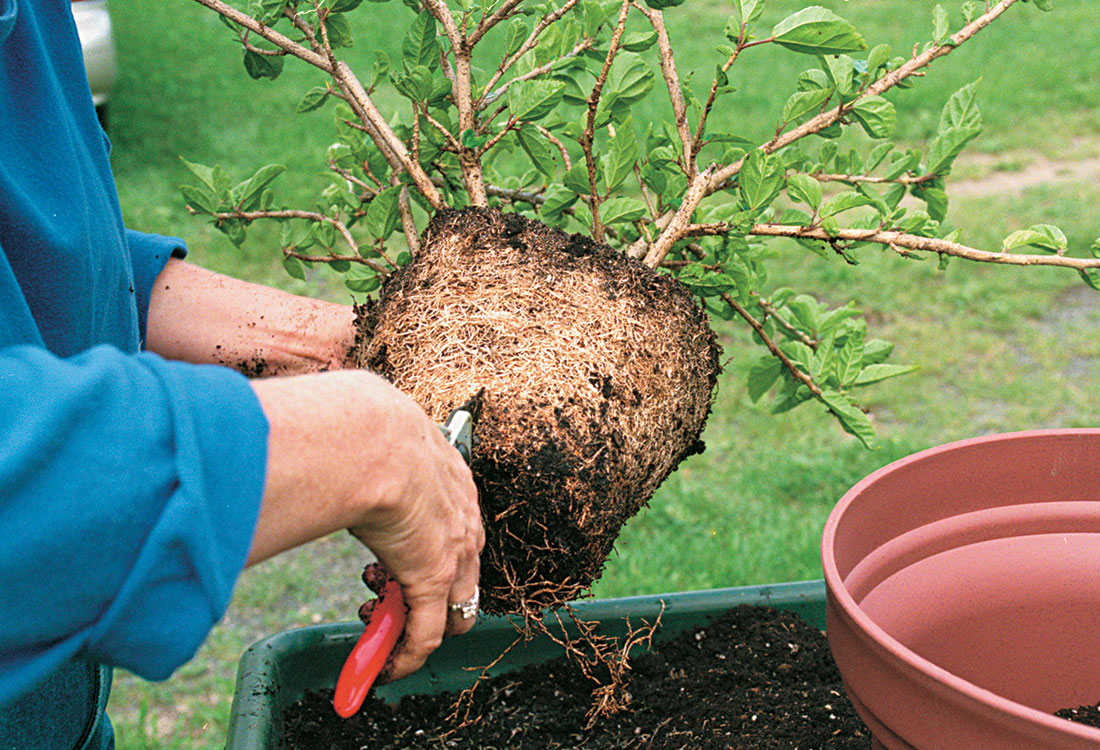
3. Take a post hole digger and dig a hole about 6” in diameter at the bottom of your planting hole. Fill the hole with broken bricks, cinder block, large rocks, anything to help fill the post-hole but leaving voids. Place a piece of landscape fabric over the top of the post-hole so the dirt won’t fall into the hole. This allows a reservoir to exist that will allow excess water to gather in the post-hole below the root zone of the plant.
4. Time to amend the natural soil. Add any type of aged coarse compost such as organic soil conditioner, or bark fines, or amendment grade aged pine bark. Estimate the number of gallons of native soil removed and add the organic amendment on a 1:1 basis at a minimum. The goal is to change the soil profile, creating a rich, well-drained root zone environment. Following this step is essential for producing healthy, vigorous, hairy roots that will efficiently absorb and translocate nutrients and water to the upper parts of the plant.
5. Once your amendment is mixed with the native soil, you are ready to start the final steps. Add enough blended soil to the planting hole so that when you place the plant in the hole the top of the root ball (depending on the severity of drainage) is 2”-4” above the natural grade.
6.Finally, after achieving the correct planting height simply fill in around the root ball. Use the excess soil to create a 2”-3” berm around the tree starting 2’-3’ from the trunk of the tree depending on the size of the plant.
7. Add fertilizer and your choice of a top-dressing mulch and your well on your way to a beautiful and healthy plant.
#2
“When should I prune, but most importantly WHEN should I prune my blooming plants?”
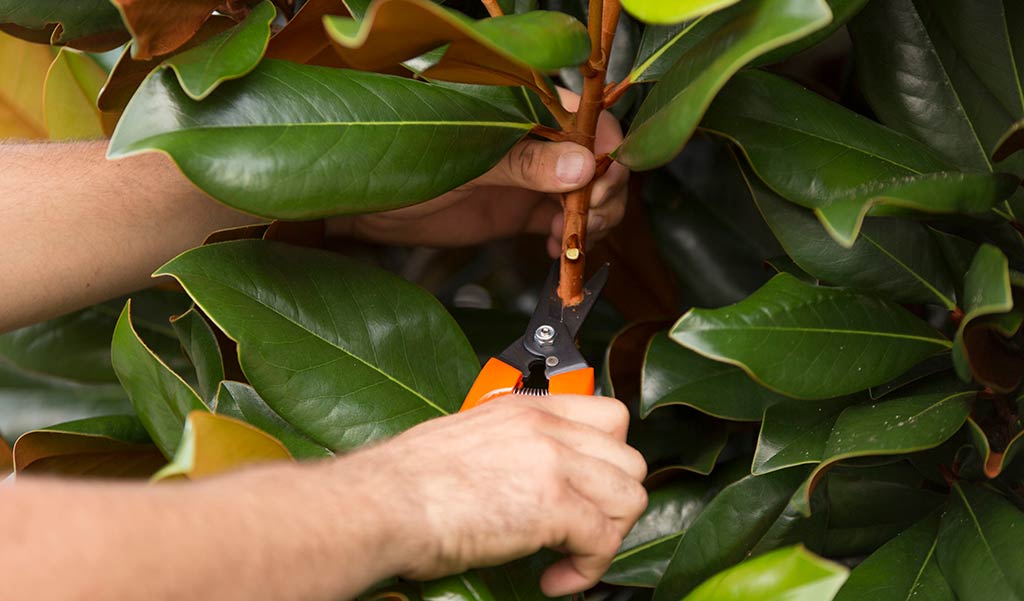
Pruning is a tricky art in and of itself. When should I prune? How should I prune? What happens if I prune too early or too late? What happens if I never prune? What if I prune too far back? Knowing the answers to all these questions takes a complete understanding of the life cycle of plants in general, but particularly the plants in your specific landscape. Most importantly…
THE MAY RULE
Well, let me digress a moment as I reflect back a couple of years!!! It had to be 1988 and here I am soaking up the incredible knowledge Dr. Harry Ponder, one of Auburn University’s greatest Horticultural professors is bestowing upon myself and 19 more of his Horticultural undergraduates. We were dumb to say the least, but Dr. Ponder and all his brilliance was about to announce one of the most important rules about pruning. One that I will never forget, and neither should you. It’s called “The May Rule”. Basically, and brilliantly, this means simply to prune plants that bloom after May such as Crapemyrtles, Limelite Hydrangeas, Roses, and many more during the winter dormant months of January, February, and even early March before they bloom. Plants that bloom before May such as Snow Ball Viburnums, Oak Leaf and Big Leaf Hydrangeas, Spirea, English Dogwoods, Camellias, and most Azaleas should be pruned right after or at the tail end of their blooming cycle. This one is pretty simple everybody. Not following this simple rule means you could easily remove the flower buds of your Azaleas if you prune too early, or prune the blooms off your Crapemyrtle if you prune too late. Got it?

Now let’s chat for a moment about pruning evergreens such as Boxwoods, Hollies, Ligustrum, Golden Privet, Magnolias and dozens of other landscape plants. The good news is that pruning most all of these plants during the holiday months is in perfect timing with bringing greenery inside to decorate for Christmas. At this point in the year, usually there aren’t enough intermittent warm days to stimulate vegetative bud emergence and so we typically are safe from any sort of cold damage. The tricky part is when to start pruning as Spring approaches. If you prune too early, as an example before March 15th, you can stimulate vegetative growth ultimately only to get killed by a late frost. A late frost or freeze can actually kill a plant that has been awakened by pruning too early. We must be careful and timing is critical.
In closing, pruning is absolutely crucial to the longevity of a landscape. Beautiful and cohesive landscapes are always well thought out. Very specifically is plant placement and how that plant occupies its intended space. Not just how it occupies its space on the day of planting but how it will or you want it to occupy that space in 5 years, 10 years, 15 years. You see everyone, this is massively important because if pruning doesn’t occur regularly and in keeping with how you want the plant to exist in its space, most or all plants can overwhelm your homes architecture. You know exactly what I am describing don’t you? Each of us has seen it, numerous times.
There is so much more to discuss about the art and act of pruning. Perhaps we need to teach an hour-long class about the subject. Write back if you think this interests any of you. In the meantime, stop by Botanic, bring your photos, and ask questions about pruning. We want to help make your landscape amazing. Remember your home is your castle!!!!!
Good Gardening,
King


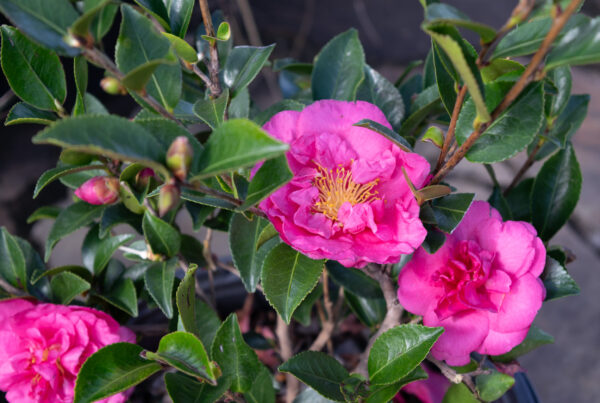
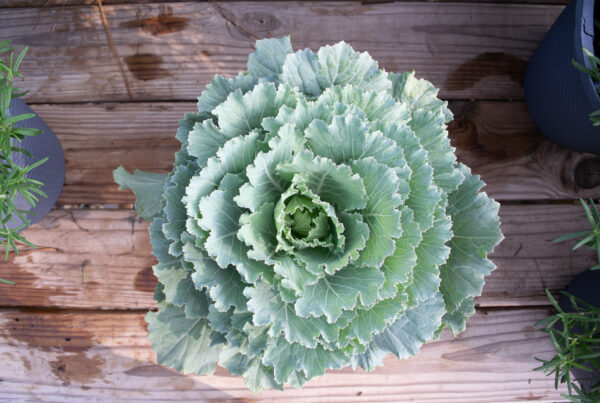
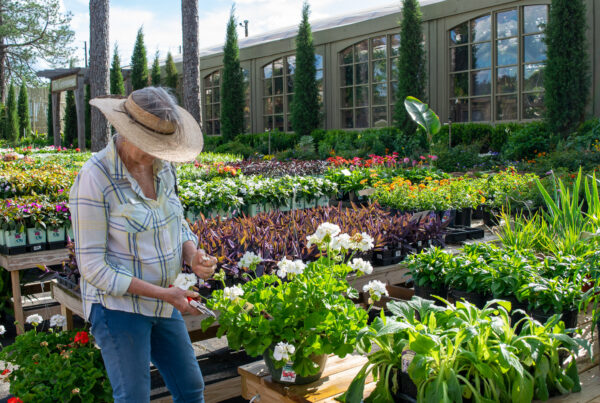

I am wondering about my encores that bloom twice a year. Most are not blooming now. Maybe because of extreme cold. If they have not bloomed by April 1, should I trim some to prepare for Fall blooms?
Would love an hour class! Love the newsletters!
I’d love to attend a class on prying! And other flower gardening classes as well.
An hour long class on pruning is an excellent idea!!!
I’d like to participate in your 1-hr. Class.
Jane Walley
Maybe you could prepare a chart/handout with the information in this article.
Thank you so much for this very useful information! I’ll be following your instructions from now on.
Great information! A class would be fun! Thanks for sharing your expert knowledge with us amateurs!
Would love a class for sure!!!
Yes a class please! Preferably on the weekend or after 5:00 weekdays for those of us that work during the week. Love the newsletters! Very helpful, as a lot of gardening books are not relevant to our southern finicky weather.
Love your newsletters! I would be interested in classes also!
Julia Stutts